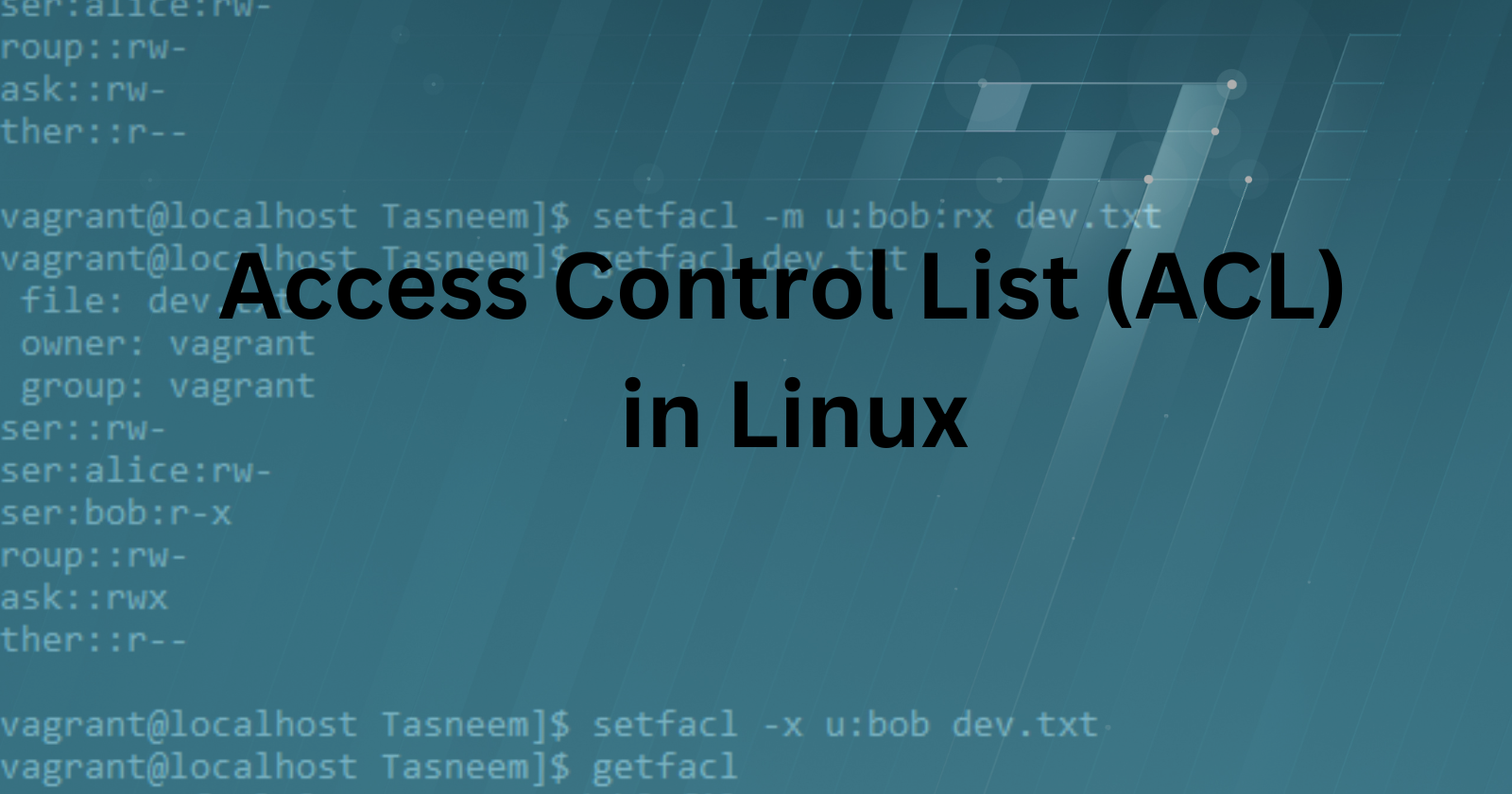Exploring the World of Linux ACLs 🚀
 Tasneem Afrida
Tasneem Afrida
Access Control Lists (ACLs) in Linux: Unveiling the Power of Fine-Grained Permissions 🛡️
Introduction 🌐
Access control is a crucial aspect of securing any system, and Linux provides a robust mechanism known as Access Control Lists (ACLs). In this blog post, we'll dive into the world of ACLs, breaking down the concept into digestible bits with real-life examples to make it a breeze for you to implement.
Understanding ACLs 🤔
ACLs extend traditional Linux file permissions by allowing you to define more granular access rules for users and groups. Instead of the standard read, write, and execute permissions, ACLs enable you to specify permissions for specific users or groups.
Key Components 🧩
Entries: Each ACL consists of multiple entries, where each entry represents a specific permission for a user or group.
Permissions: Similar to standard Unix permissions, ACLs include permissions like read, write, and execute.
Default ACLs: These define the default permissions for newly created files and directories within a specific directory.
How to Use ACLs in Linux 🛠️
Check Current ACLs 🕵️
To view existing ACLs, use the getfacl command:
getfacl filename
Add an ACL Entry 📝
Adding an ACL entry is simple. Let's grant user "Alice" read and write permissions:
setfacl -m u:alice:rw filename
Remove an ACL Entry ❌
Removing an ACL entry is just as straightforward. To revoke write permission from "Bob":
setfacl -x u:bob filename
Default ACLs 🔄
Setting default ACLs is handy when you want specific permissions to apply to newly created files and directories. For example:
setfacl -m d:u:john:rx /path/to/directory
This ensures that any new files or directories created in /path/to/directory inherit the read and execute permissions for user "John."
Real-Life Examples 🌍
Let's consider a scenario where you have a shared project directory:
# Create a new directory
mkdir /projects/shared
# Grant read and write access to user "dev1"
setfacl -m u:dev1:rw /projects/shared
Now, any file created in /projects/shared will inherit the ACL, allowing "dev1" to read and write.
Conclusion 🎉
Access Control Lists bring a new level of flexibility to Linux file permissions. By incorporating ACLs into your system, you can tailor access rights to individual users and groups, enhancing security without compromising simplicity.
Embrace the power of ACLs, and take control of your file permissions like never before! 🔐✨
Subscribe to my newsletter
Read articles from Tasneem Afrida directly inside your inbox. Subscribe to the newsletter, and don't miss out.
Written by
